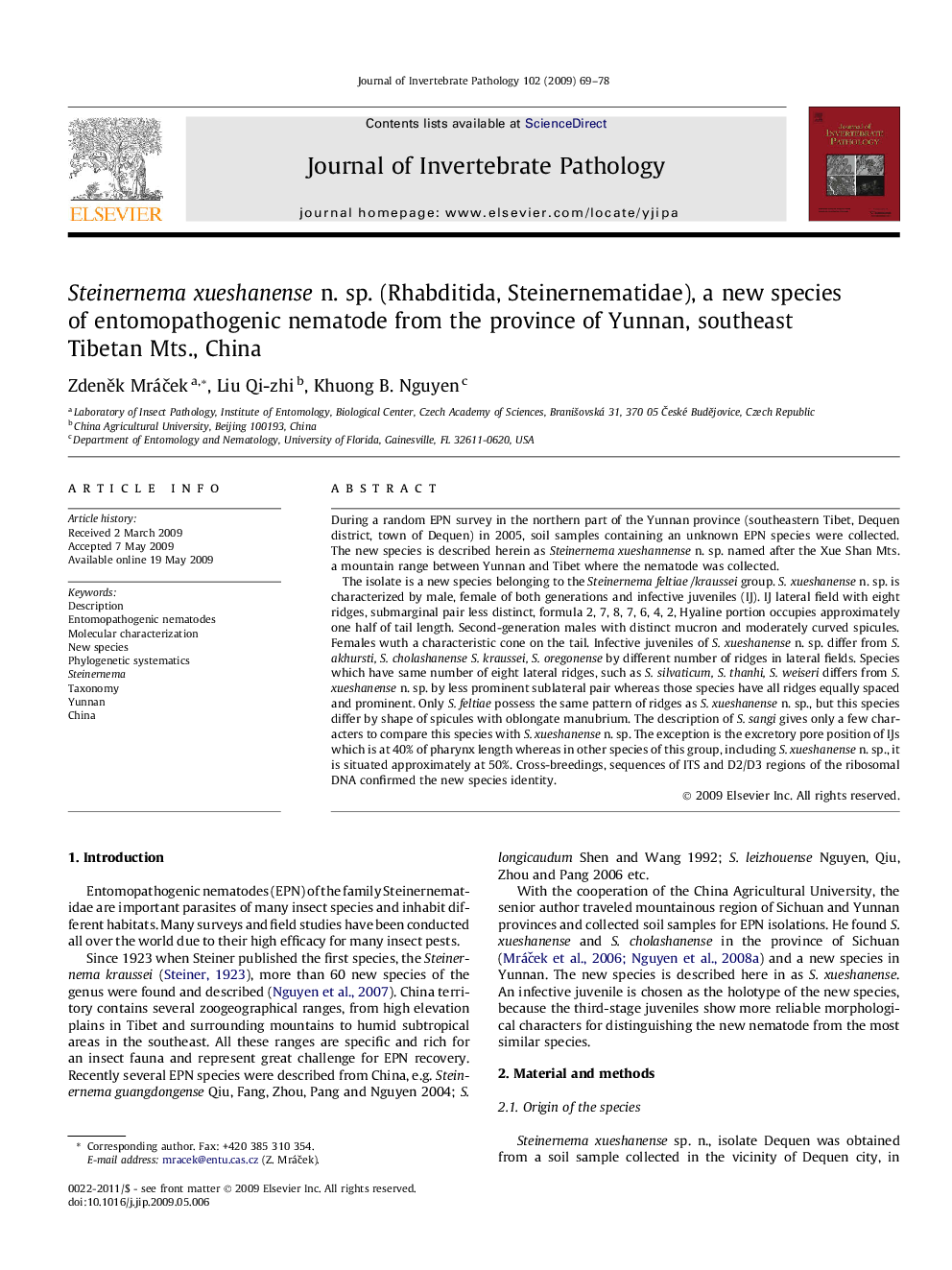| کد مقاله | کد نشریه | سال انتشار | مقاله انگلیسی | نسخه تمام متن |
|---|---|---|---|---|
| 4558072 | 1329920 | 2009 | 10 صفحه PDF | دانلود رایگان |

During a random EPN survey in the northern part of the Yunnan province (southeastern Tibet, Dequen district, town of Dequen) in 2005, soil samples containing an unknown EPN species were collected. The new species is described herein as Steinernema xueshannense n. sp. named after the Xue Shan Mts. a mountain range between Yunnan and Tibet where the nematode was collected.The isolate is a new species belonging to the Steinernema feltiae /kraussei group. S. xueshanense n. sp. is characterized by male, female of both generations and infective juveniles (IJ). IJ lateral field with eight ridges, submarginal pair less distinct, formula 2, 7, 8, 7, 6, 4, 2, Hyaline portion occupies approximately one half of tail length. Second-generation males with distinct mucron and moderately curved spicules. Females wuth a characteristic cone on the tail. Infective juveniles of S. xueshanense n. sp. differ from S. akhursti, S. cholashanense S. kraussei, S. oregonense by different number of ridges in lateral fields. Species which have same number of eight lateral ridges, such as S. silvaticum, S. thanhi, S. weiseri differs from S. xueshanense n. sp. by less prominent sublateral pair whereas those species have all ridges equally spaced and prominent. Only S. feltiae possess the same pattern of ridges as S. xueshanense n. sp., but this species differ by shape of spicules with oblongate manubrium. The description of S. sangi gives only a few characters to compare this species with S. xueshanense n. sp. The exception is the excretory pore position of IJs which is at 40% of pharynx length whereas in other species of this group, including S. xueshanense n. sp., it is situated approximately at 50%. Cross-breedings, sequences of ITS and D2/D3 regions of the ribosomal DNA confirmed the new species identity.
Journal: Journal of Invertebrate Pathology - Volume 102, Issue 1, September 2009, Pages 69–78